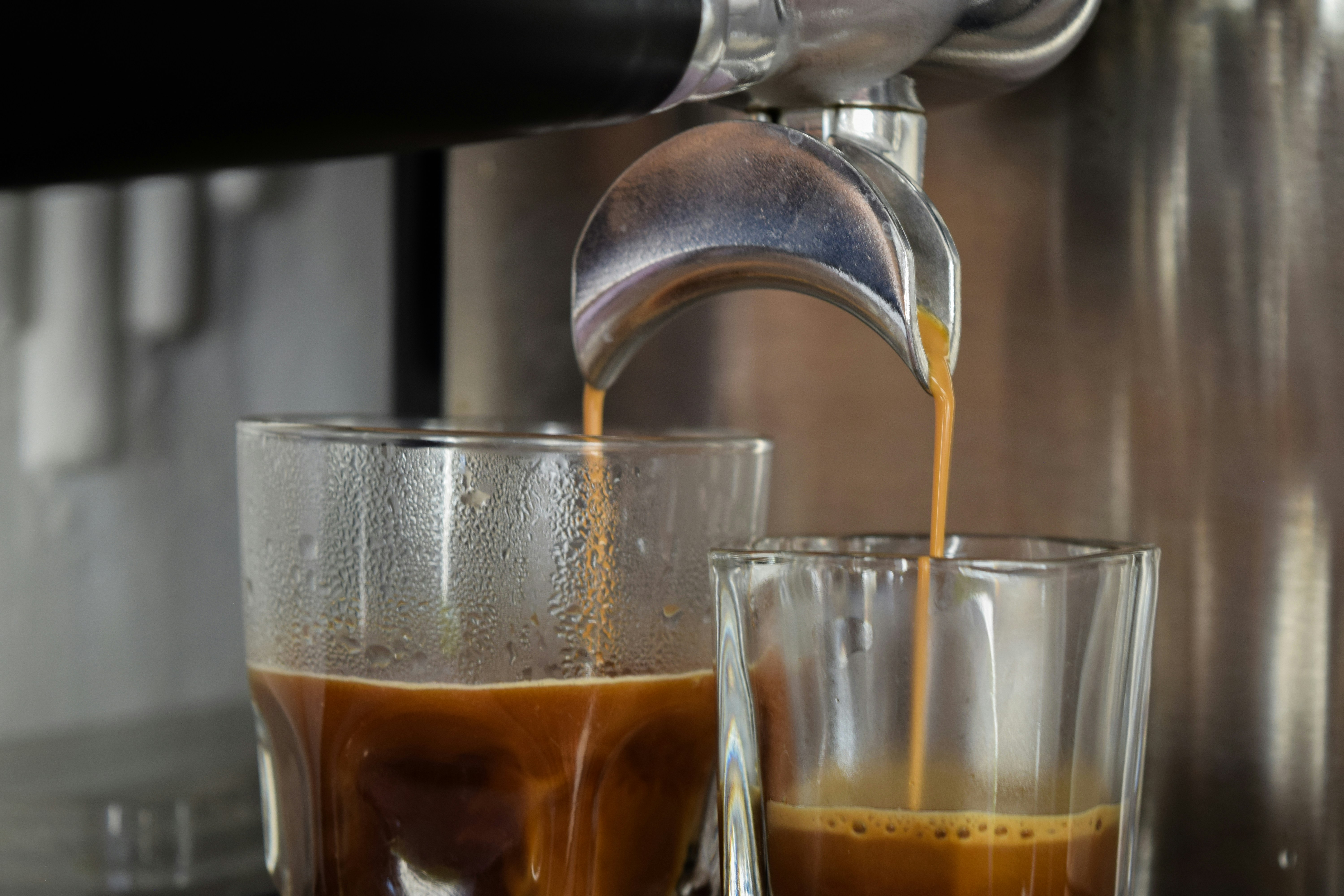Debt-Fueled Megadeals Ignite a Franchisee Growth Wave
Private equity is accelerating franchisee expansion at 7 Brew and Bojangles as debt markets reopen, pairing disciplined playbooks with development-heavy commitments.

Photo by Mahdi Dastmard on Unsplash
Two Megadeals, One Signal
The autumn calendar opened with decisive strokes. In "September 2025", two headline transactions announced themselves not as isolated gestures but as a duet: Franchise Equity Partners (FEP) acquired a majority stake in 7 Crew, the second-largest franchisee of 7 Brew, while Eyas Capital purchased BOJ of WNC, Bojangles’ largest franchisee. Each deal carried a built-in crescendo. As part of the 7 Crew agreement, FEP committed to develop "more than 200" additional 7 Brew stands across Texas, Florida, Oklahoma, and New Mexico, expanding on "approximately 50" stands already in the 7 Crew portfolio. Eyas, for its part, took the keys to a platform with "more than 120" units and outlined plans to add "40" restaurants across Western North Carolina and into Cincinnati and Columbus, Ohio. The choreography is unmistakable: start with operators that already command the stage, then extend the footprint where demand appears primed. This is expansion like a well-sequenced tasting—each course precise, each ingredient aligned with the next. The backdrop is as critical as the action: 7 Brew’s sprint from "14" locations in "2021" to "over 460" in "2025" sets a tempo that welcomes capital’s embrace, while Bojangles’ category—chicken—sits in a constellation of segments described as fundamentally sturdy. Analysis: The paired transactions show private equity concentrating on scaled franchisees with visible runway, marrying existing density to development commitments under a financing climate conducive to growth.
Why Lenders Are Back
A thaw in financing has turned from rumor to reality. Allison Gargano of Morgan Lewis observes that while M&A has not reclaimed its "2021" summit, "the uptick this year includes restaurant franchisees," a crisp acknowledgment that capital has refocused its gaze. Derek Ladgenski of Katten Muchin Rosenman goes further: inflows to the debt market are "as high as they've ever been," backed by a broad lender base ready to fund appropriately structured deals. The logic is elegantly simple. Franchisee platforms that produce predictable cash flows and carry scalable development agreements are natural vessels for this fresh liquidity. They convert debt into units with measurable cadence; they speak in the language lenders understand—consistency and clarity. In this light, the megadeals are less a surprise than a consequence. Private equity seeks efficient deployment; lenders seek dependable repayment; franchised operators, with operational guardrails and brand playbooks, offer a bridge between the two. Analysis: Commentary from legal advisors and observed deal flow converge on a single point: debt availability and appetite act as primary catalysts for franchisee consolidation and expansion when operators’ cash flows and structures fit lender criteria.

Coffee, Throughput, Momentum
The 7 Brew story reads like a brisk espresso shot—concentrated, propulsive. Founded in "2017" in Rogers, Arkansas, the brand has scaled a drive‑thru format that prizes speed and throughput. From "14" locations in "2021" to "over 460" in "2025", and as of "October 14, 2025" reaching the "500‑location" milestone, the arc is unmistakable. Each location averages approximately "$2 million" in unit volume, a figure that sharpens the rationale for platform investments. Strategic capital has been a steady hand on the lever. Blackstone Growth supplied growth equity in "February 2024" to accelerate expansion, while Orangewood Partners deepened its stake in Motley 7 Brew (M7B) to support acquisitions and new development across Ohio, Georgia, and Texas. A marketing lift arrived with a Dude Perfect partnership in "September 2025", and a site in Orange, Texas, announced in "mid‑2025", signaled market pull even beside entrenched giants. Against this canvas, FEP’s majority stake in 7 Crew, paired with a commitment to open "more than 200" additional stands across four states, feels like a continuation of a score already in full crescendo. Analysis: Rapid unit expansion, robust average unit volumes, and layered sponsor support show why 7 Brew franchisees attract private equity; development-heavy strategies align with a brand that has demonstrated velocity and demand.
Chicken With a Map
If 7 Brew is tempo, Bojangles provides structure—a map with both well-traveled roads and fresh trails. Eyas Capital’s acquisition of BOJ of WNC delivered a platform with "more than 120" units and an accompanying plan to develop "40" additional locations across Western North Carolina and into Cincinnati and Columbus, Ohio. The design blends consolidation and adjacency, aiming to deepen existing strength while testing performance in new markets that rhyme with the brand’s core demographics. The category itself—chicken—sits among segments where fundamentals have been described as strong. In practice, that means the ingredients for expansion are already in the pantry: recognizable menu, operational rhythm, and territories with receptive demand profiles. By starting from a scaled base, Eyas can deploy capital with a clearer operational baseline and tune the cadence of openings to what the market will bear—a restrained pour rather than a flood, ensuring the flavor profile remains consistent as the footprint expands. Analysis: The Eyas move mirrors the 7 Brew thesis: begin with dominance, then overlay a disciplined development pipeline into regions poised to support unit growth.
Operations, Development, M&A—Aligned
Private equity’s recipe in franchisee land distills to a "trifecta": organic operational improvements, new unit development, and targeted acquisitions. Derek Ladgenski frames the opportunity with that very word, and the technique is familiar to those who value balance over bravado. Process discipline—cost control, streamlined management—can sharpen margins for operators that were built on entrepreneurial verve. Development agreements supply the growth spine. Acquisitions, when aligned, add scale without diluting identity. Capital mechanics are the finishing sauce. Firms marshal undrawn limited partner commitments, delayed draw term loans, and established Wall Street lending relationships, enabling them to time capital deployment against steady operator cash flows. The FEP–7 Crew agreement to open "more than 200" stands is a textbook example of development embedded in the platform, while Eyas Capital’s plan to add "40" Bojangles units shows the same cadence applied to a different category. Each lever complements the others; together, they compound outcomes. Analysis: Coordinating operations, development, and M&A—supported by flexible financing—allows sponsor-backed franchisees to convert stable cash flows into scalable expansion with controlled risk.
Returns, Rules, Regions
Expectations still take their cue from a pre-pandemic benchmark. Kroll’s Josh Benn points to cash-on-cash returns of "12–15%" as the historical lodestar, a range that continues to frame investor appetite even as conditions evolve. Capital has shown a taste for brands with strong unit economics—examples cited include Dunkin’, Taco Bell, and Wingstop—and for categories like chicken and Mexican fast casual, while more commoditized segments such as pizza face a cooler reception. Franchisor rules shape feasibility. Restaurant Brands International limits leverage and geography and requires owner-operator equity, constricting the buyer pool, whereas system-friendly franchisors facilitate smoother transactions. Geography, too, refuses to be an afterthought; Popeyes is cited as dominant in Louisiana but underperforming elsewhere, a reminder that context flavors results. Against this backdrop, the chosen theaters for the two megadeals—Texas, Florida, Oklahoma, New Mexico, and specific corridors from Western North Carolina to Ohio—read as calibrated selections rather than scattershot bets. Analysis: Returns history, franchisor policies, and regional performance profiles funnel capital toward systems and markets where economics, governance, and geography align—explaining the markets prioritized in the 7 Brew and Bojangles strategies.
Tools And Discipline
Execution is equal parts instruments and mise en place. On the financing side, Ladgenski’s observation that inflows are "as high as they've ever been" is accompanied by tools that suit development’s tempo: delayed draw term loans that match capital calls to phased openings under franchise agreements. Add undrawn limited partner commitments and long-standing ties to Wall Street lenders, and sponsors possess multiple routes to fund buildouts while preserving flexibility. Operators, for their part, must present a polished kitchen: audited financials, consistent management, and thorough documentation that withstand diligence. This is the difference between a promising concept and a platform ready to scale. The 7 Crew and BOJ of WNC platforms embody that alignment—scale today with articulated development for tomorrow—reducing friction between intent and outcome. In practice, it means units open in rhythm with demand, not ahead of it; debt draws are measured, not improvised. Analysis: Matching financing tools to phased development, while ensuring institutional-quality seller readiness, lowers execution risk and accelerates the "trifecta" of operations, development, and M&A.
Clarity And Open Questions
Not every ingredient is listed on the label. The materials at hand specify unit counts, timelines, and strategic intentions, but they do not disclose transaction valuations, financing terms, or return targets beyond the "12–15%" pre-pandemic benchmark. Lender identities appear only in general outline, and the precise cadence for opening "more than 200" 7 Brew stands or the "40" planned Bojangles units is undefined beyond geography. Those omissions matter; capital costs, franchisor approvals, and construction timelines can modulate pace. Yet the through-line is pronounced. An "improved debt environment" and inflows "as high as they've ever been" are supporting franchisee-scale plays where brands already display strong unit economics and system readiness. The lesson is elegant in its restraint: when capital is abundant and operators are prepared, growth favors those who can pair discipline with momentum. In turn, the next course seems set—sponsors will continue to back franchisee platforms that offer established footprints, clear runways, and development agreements that can be executed with measured, confident pacing. Analysis: Despite gaps on pricing and structure, the documented development commitments and financing signals point to continued momentum for private equity–backed franchisee expansion, with success hinging on disciplined execution and brand-market fit.